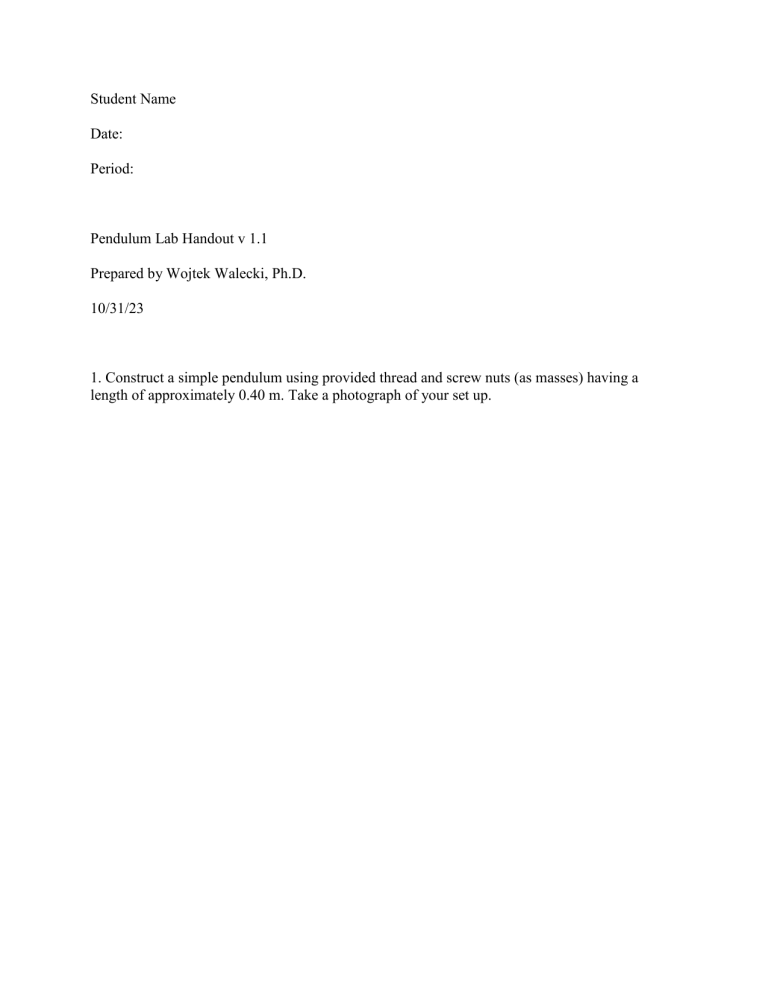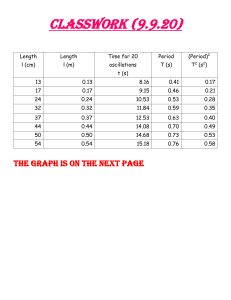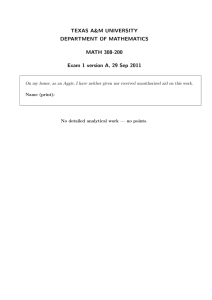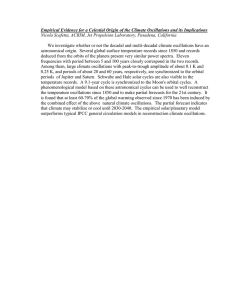
Student Name Date: Period: Pendulum Lab Handout v 1.1 Prepared by Wojtek Walecki, Ph.D. 10/31/23 1. Construct a simple pendulum using provided thread and screw nuts (as masses) having a length of approximately 0.40 m. Take a photograph of your set up. 2. Measure the period of small oscillations when the amplitude of oscillations <10 deg. Measure 10 oscillations and calculate the duration of the single period. 3. Measure the period of big oscillations when the amplitude of oscillations >30 deg. Measure 2,4 oscillations and calculate the duration of the single period. 4. Measure the period of very small oscillations when the amplitude of oscillations <10 deg. Measure 10 oscillations and calculate the duration of the single period. 5. What are the conclusions of measurements 2-4? 6. Measure the period of small oscillations of the system employing 1, 2, and screw 3 nuts. Present data in the form of a table : Number of screw nuts Total mass [kg] 10T[s] 7. Based on the table in point 6 do you see dependence of T on mass? T [s] 8 measure the period of small oscillations for various lengths of the string (up to about 1 m): Measurement number 1 2 3 4 5 6 7 9. Plot a. T vs L, b. T^2 vs L, and c. ln(T) vs. ln(L) (Total THREE! graphs). L (m) 10 T [s] T [s] Which of these three graphs resemble a straight line? What is the meaning of slope? In there a non zero intercept. What is the meaning of the intercept if any? 10. Find in your textbook the formula for the period of a simple pendulum. Copy it below and provide a reference. 10. Using plot T^2 vs L find the slope of the line and relate it to free fall acceleration g. Slope = ____________ s^2/m Calculate g = __________________ m/s^2 11. Find slope in the graph ln(T) vs. ln(L). Is it close to 0.5? Why?





